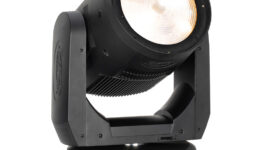LIVE
4 Feb 2025
Shure’s Axient Digital PSM WMAS Product Debuts on NSW Schools Spectacular
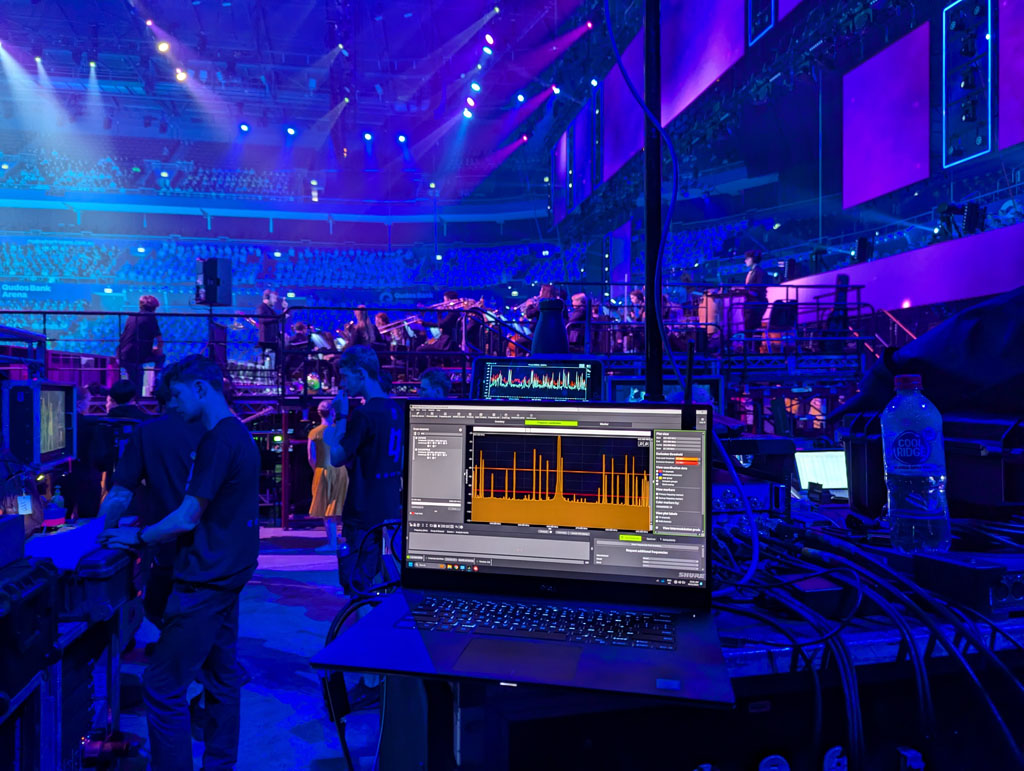
Subscribe to CX E-News
The generational revolution in RF technology has debuted on the Australian stage with the first usage of any WMAS (Wireless Multichannel Audio System) product on a live gig. The NSW Schools Spectacular, held on November 29 and 30 at the 20,000 capacity Sydney’s Qudos Bank Arena, is a logistically and technically complex annual show, and featured around 5,500 performers from 400 public schools, plus a live broadcast.
Profiles RF Management, headed by expert Peter Twartz, were engaged to manage radio frequency coordination on the massive event, and were provided with a pre-production version of Shure’s Axient Digital PSM in-ear monitoring system by distributor Jands to trial on the show. The rig included the ADTQ Quad transmitter, an AD8C eight port antenna combiner, four ADXR wireless beltpack receivers (with an SBC441 four port charger), and an AD610 ShowLink wireless access port for remote device management.
The revolutionary thing about the ADTQ’s WMAS technology is that the 1RU unit is capable of transmitting four independent stereo channels in its Multichannel mode from each of its four radios, occupying 4 x 800MHz. At the moment, only one radio is enabled (more on that later) so it’s limited to four stereo channels. It can also run in Narrowband mode, which increases RF power for greater range, Analog FM mode for virtually zero latency, or Axient Digital Standard mode to transmit to existing, non-WMAS Axient Digital wireless receivers. Its patented Spatial Diversity transmission defends against multipath interference, while its wide tuning range enables clean and flexible transmission frequencies while on tour, at a global level.
With an incredible amount of RF to manage on-site, Peter and PRM chose to run the ADTQ in Wideband mode to provide flawless, continuous monitoring to two of the show’s hosts, one feed to monitor engineer Stephen May, and one feed to RF microphone manager Jess McCloughan and her Shure Wavetool monitoring rig.
“One of the technical challenges we were trying to solve with Axient Digital PSM was presenter movement,” explains PRM’s Peter Twartz. “There was a mid-show cross to a presenter who started way up in the backstage corridor, walked down the corridor speaking on camera, and eventually returned to the auditorium, all in one shot. That is easy to manage for the presenter’s wireless microphone using multiple antennas and Shure’s Quadversity receive mode. But wireless in-ear-monitors ears are much harder.”
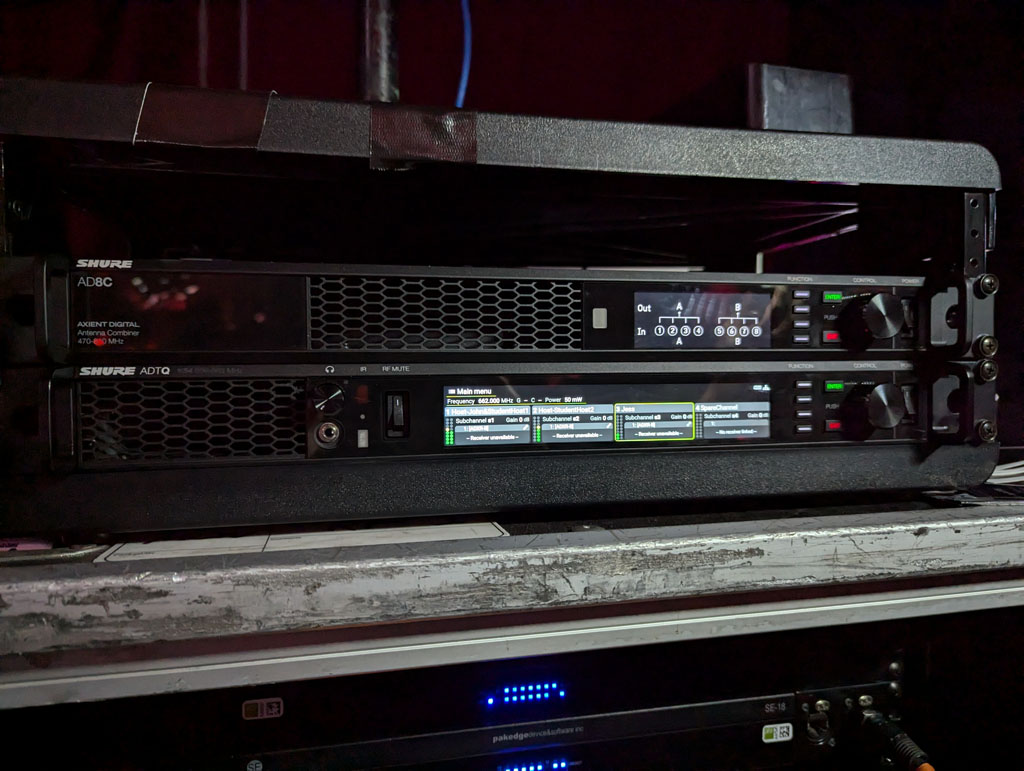
The ADTQ’s Wideband mode allowed for synchronous transmission across multiple antennas, so one antenna could be pointing up the backstage corridor while another covered the main auditorium. “As the presenter moved between the two antennas, the signal stayed constant,” continues Peter, “whereas using older technology, they would have gotten distracting interference and ‘wishy-wash’ sounds in the monitors.
We tried to do exactly the same transition last year, and we couldn’t do it cleanly, so there was a break in the presenter’s movement in the broadcast. It’s something you just can’t do without this technology.”
To get technical, Spatial Diversity employs two transmit diversity antennas, each sending an identical signal on the same frequency to mitigate signal fades from multipath interference or to easily support separate zones. Combined with True Digital Diversity bodypack receivers, Axient Digital PSM combines four discrete signal paths per channel to deliver advanced protection against multipath interference and RF noise. Spatial Diversity is a better alternative to passive antenna splitting, and it doesn’t require careful placement of the antennas to maintain optimal performance. Instead, you can place two antennas almost anywhere to extend your range and improve the quality of the overall signal, while also having the option to use the second antenna to cover a separate zone as you would with passive antenna splitting.
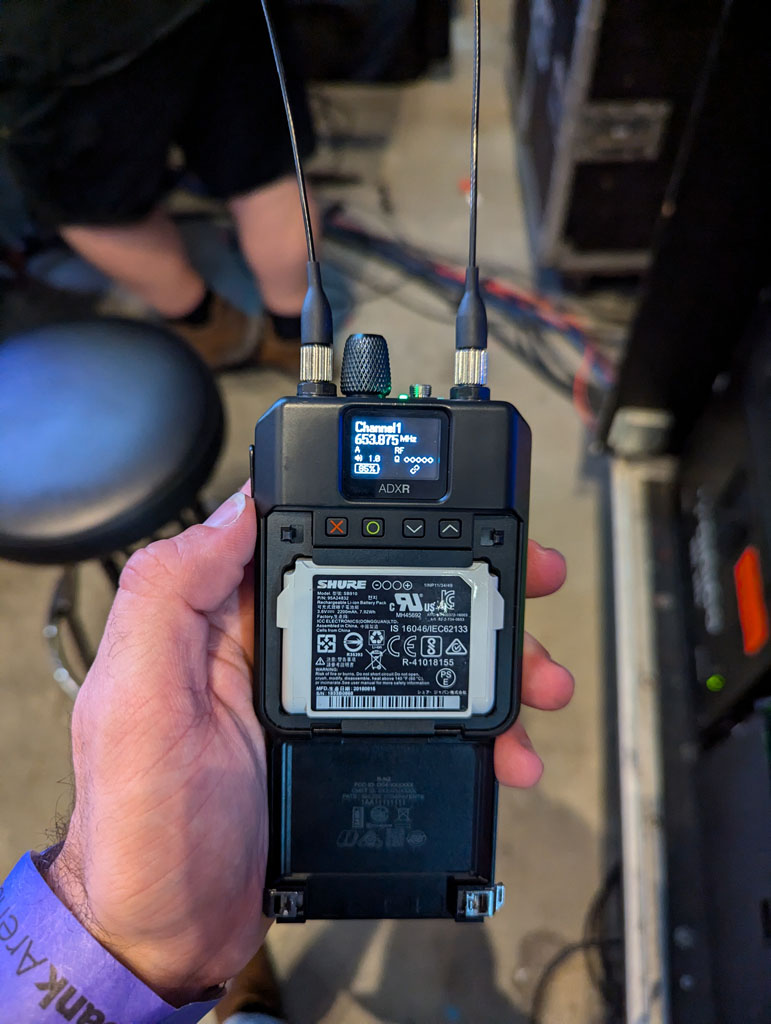
“The synchronous transmit feature will be very handy at a number of events we work on at PRM,” enthuses Peter. “At Schools Spectacular, we were running four stereo sends in wideband, and that was absolutely straightforward and easy. Shure has indicated that a future firmware upgrade and a license will enable the four radios to run four stereo sends each, and we can position those 800kHz slots or bands wherever they need to go; we wouldn’t need to find a much bigger chunk of spectrum. You can just keep stacking them up without having to think about intermodulations. You don’t have interference between bands. The management of your frequencies becomes much more straightforward.”
After the show, Jands let PRM take the system back to their HQ to experiment with its capabilities without the pressure of a live show. “I was trying to understand a lot more about the RF, because that’s what we do as a business,” says Peter. “I wanted to see exactly how much bandwidth it was using up, and how close you could put two frequencies to each other and not have interference. I was pleasantly surprised with the results in both narrowband and wideband modes.”
Peter observed that the Axient Digital PSM build quality is exactly consistent with all of Shure’s top-of-the-line products and sees widespread adoption of WMAS technology in the industry. “I think it’s going to become mainstream very rapidly,” predicts Peter. “Concert and touring professionals are going to trip over themselves to use it. It also sounds great!”
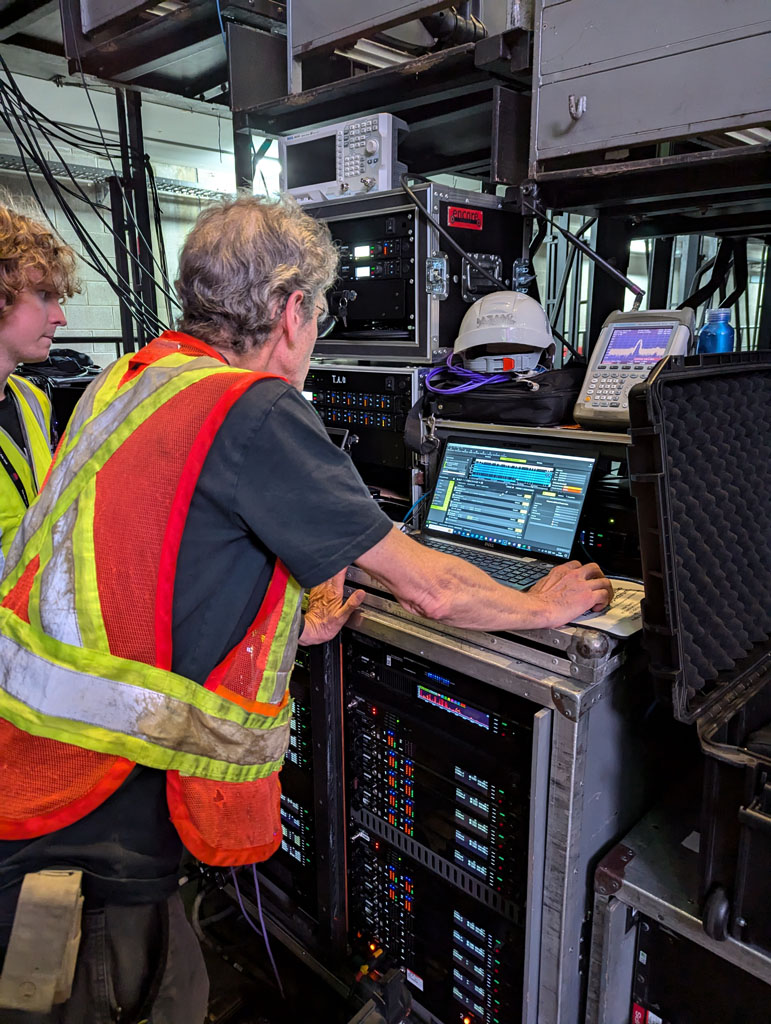
“It was incredible to see Shure’s Axient Digital PSM make its debut at Schools Spectacular 2024,” says Jacob Mumford, Applications Engineer at Jands. “This marks the first deployment of WMAS technology at an event of this size and status in Australia. A huge thanks to Peter Twartz for his expertise and enthusiasm for integrating this new tech into such a significant event.”
For a full overview of Shure Axient Digital PSM’s remarkable flexibility, including ShowLink remote control, networkable monitoring with Wireless Workbench, analog and digital (AES3, AES67, Dante) inputs, and internal antenna combining, go to www.shure.com/en-ASIA/ products/in-ear-monitoring/ adpsm
Photos by Jands’ Jacob Mumford
Subscribe
Published monthly since 1991, our famous AV industry magazine is free for download or pay for print. Subscribers also receive CX News, our free weekly email with the latest industry news and jobs.


